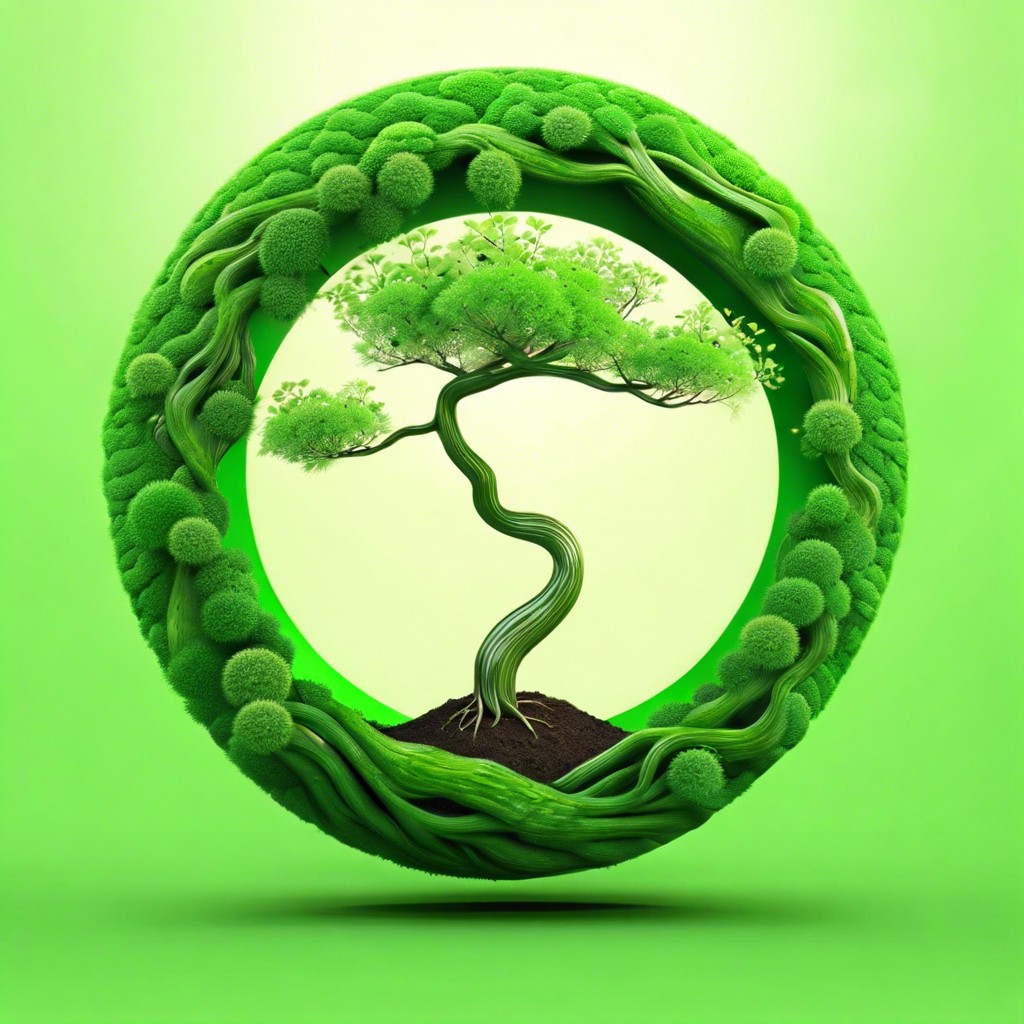Discover the spiritual significance of the color green and how it influences emotions, growth, and harmony.
The color green is more than just a hue; it embodies renewal, growth, and a deep connection to nature. As you delve into its meanings, you’ll uncover its ties to balance, harmony, health, and cultural significance across the globe. This exploration will reveal how green’s rich symbolism impacts our environment, emotions, and traditions.
Key takeaways:
- Symbolizes renewal and growth: Fresh beginnings, vibrant growth.
- Represents nature and environment: Tied to natural world, environmental awareness.
- Signifies balance and harmony: Middle-ground position, emotional balance.
- Associated with health and healing: Reduces stress, promotes well-being.
- Holds cultural significance: Luck, prosperity, fertility, rebirth in various societies.
Symbolism of Renewal and Growth

Green often symbolizes fresh beginnings and vibrant growth, making it a powerful color for anyone seeking renewal. It’s the hue of budding plants and sprouting leaves, signifying life emerging and flourishing.
Consider how green signals new opportunities. In traffic lights, green means go, indicating forward movement and progress. Similarly, the arrival of spring, marked by an explosion of green, represents the earth’s renewal after the dormancy of winter.
On a personal level, wearing green or decorating with this color can promote feelings of hope and rejuvenation. It creates an environment that fosters growth, both physically and emotionally.
Incorporate green into your daily life to remind yourself of the potential for new beginnings. Whether through nature walks or simply adding green elements to your workspace, it’s a simple way to invite renewal and growth into your routine.
Connection to Nature and the Environment
Green is inherently tied to the natural world. It is the color of grass, leaves, and many plants, instantly evoking the great outdoors.
This color often brings to mind lush forests and serene meadows, reminding us of the Earth’s bountiful beauty. It suggests vitality and life, painting images of fertile lands and blooming flora.
Green also signifies environmental awareness. It symbolizes conservation efforts and sustainability, reflecting a commitment to protecting our planet.
Moreover, being surrounded by green spaces can reduce stress and promote mental well-being. It’s a gentle nudge to embrace tranquility and connectedness with nature.
Representation of Balance and Harmony
Green often symbolizes balance and harmony, thanks in part to its placement in the center of the color spectrum. This middle-ground position represents equilibrium and neutrality.
In the world of chakras, green is linked to the heart chakra, which is pivotal for emotional balance and compassion. A well-aligned heart chakra fosters a sense of inner peace and the ability to nurture both ourselves and others.
Scientifically, green has a soothing effect, which is why it’s prevalent in spaces designed for relaxation, such as hospitals and spas. This calming hue can help reduce stress, promoting mental and emotional harmony.
In nature, green is abundant, reminding us of the intrinsic balance in ecosystems. It’s the color of flourishing forests and verdant meadows where life thrives in harmony.
Relation to Health and Healing
Green is often associated with health and rejuvenation. The calming effect of the color is believed to reduce stress, which in turn can promote healing. This is why you often find green in hospitals and wellness centers.
The color green can create a balanced state in both body and mind. It is known to invoke a sense of tranquility, which helps in mental clarity and overall well-being. This tranquility benefits those experiencing anxiety or restlessness.
In terms of physical health, green is linked to detoxification. Foods that are green, like leafy vegetables, are packed with essential nutrients and are often recommended for maintaining good health. This intrinsic connection between green and well-being highlights the importance of the color in our daily lives.
Cultural Significance in Various Societies
In many cultures, green carries profound meanings. In Western societies, it often symbolizes luck and prosperity, as seen in traditions like St. Patrick’s Day. In Islamic cultures, green is deeply revered and associated with paradise and the Prophet Muhammad. It adorns flags and sacred spaces.
For the ancient Egyptians, green represented fertility and rebirth, connected to their god Osiris. In China, green jade is celebrated for its beauty and protective qualities.
Each culture imbues green with distinct yet universally resonant qualities, reflecting their unique values and environments.





